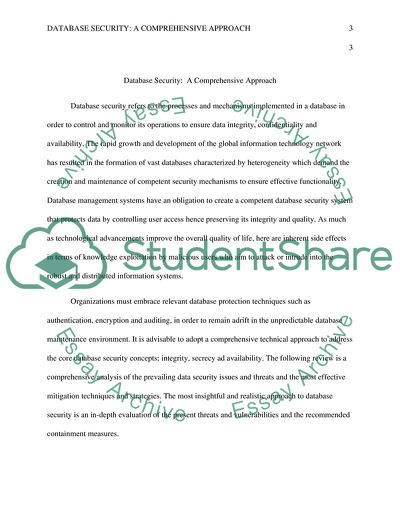Cite this document
(Database Security: A Comprehensive Approach Coursework Example | Topics and Well Written Essays - 3750 words, n.d.)
Database Security: A Comprehensive Approach Coursework Example | Topics and Well Written Essays - 3750 words. https://studentshare.org/information-technology/1835910-database-security-a-comprehensive-approach
Database Security: A Comprehensive Approach Coursework Example | Topics and Well Written Essays - 3750 words. https://studentshare.org/information-technology/1835910-database-security-a-comprehensive-approach
(Database Security: A Comprehensive Approach Coursework Example | Topics and Well Written Essays - 3750 Words)
Database Security: A Comprehensive Approach Coursework Example | Topics and Well Written Essays - 3750 Words. https://studentshare.org/information-technology/1835910-database-security-a-comprehensive-approach.
Database Security: A Comprehensive Approach Coursework Example | Topics and Well Written Essays - 3750 Words. https://studentshare.org/information-technology/1835910-database-security-a-comprehensive-approach.
“Database Security: A Comprehensive Approach Coursework Example | Topics and Well Written Essays - 3750 Words”. https://studentshare.org/information-technology/1835910-database-security-a-comprehensive-approach.


